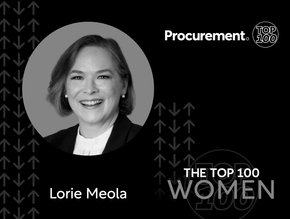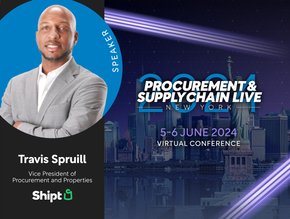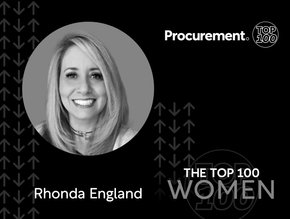ORO Labs: Three hot trends in procurement

The current economic climate presents companies with a challenging business environment, and nowhere is that truer than in the world of procurement and supply chains. Without an evolution and modernisation in these practices, organisations are likely to face growing maverick spend, bottlenecks in business workflow, and perhaps most worryingly, a lack of involvement and visibility for procurement in spend under management.
It’s thus worth looking at a few of the hot trends in procurement, and how they can help procurement professionals overcome these challenges.
Workflow Orchestration
One particularly hot organisational trend is increased orchestration in procurement and supply chain management. Many organisations find that procurement – along with many other business systems and processes – is fragmented, siloed and often way too manual. Orchestration involves integrating and coordinating systems to eliminate this fragmentation, streamline workflows and foster inter-departmental collaboration.
Fragmentation creates bad workflows, which lead to bad data, and in turn, poor business decisions. This can interfere with objectives such as increased compliance or improved security/decreased fraud. Automating and orchestrating the procurement process across the organisation is essential to combat this negative domino effect.
There are two keys to proper procurement orchestration. The first is establishing smart workflows – in other words, using process automation to coordinate spend across various silos (organisational, geographic, application, data, etc.) to reduce cycle times, and onboard and engage with suppliers more efficiently. The second key is using “orchestration software” to create a composable and integrated framework from existing, underlying applications.
By creating optimised workflows across user actions and integrated systems, procurement can help generate comprehensive, high-quality data, allowing management (and even individual employees) to make better, more consistent decisions.
Moreover, the right workflows for a particular organisation provide better visibility and control over fragmented processes. They also allow employees to effectively self-service procurement and supply needs, replacing the requirement for time-consuming change requests. By digitising and automating manual parts of procurement, orchestration helps organisations reign in the maverick spend that often circumvents more “traditional” procurement processes.

Spend Pipeline
Traditionally, procurement has looked backward to gain visibility – analysing and tracking past spending for insight into vendor consolidation, contract renegotiation, and more. While this approach works, it has its limitations. For one, it doesn’t provide visibility into what’s coming down the pipe. Furthermore, it also doesn’t work well for discretionary or ad-hoc spending.
Today, Spend Management is decentralised; business team leads not only have ownership of their budget, but also the primary responsibility for prioritising and tracking those budget commitments. Procurement systems have historically left budget owners to contend with a major blind spot in terms of “coming soon” spend, as well as lacking data that clearly indicates what budget has already been committed (even if yet to be invoiced) vs. what is left to spend for any additional requests.
For companies that want to empower and charge budget owners with making strategic cost cutting decisions, achieving this kind of increased visibility into spending and budgetary considerations is a key requirement. It enables budget owners to make a sound decision when assessing whether a new contract can be reduced, or even avoided, to preserve funds for more critical initiatives, while allowing their organisation to improve overall agility and better adapt as conditions continue to change.
This explains the trend of analysing spend pipelines – the data, and corresponding systems and workflow, needed to view and understand current spending commitments across existing contracts, purchase orders, etc. In looking forward, organisations can better match allocated budgets to actual spending.
More importantly, the use of spend pipelines enables budgetary foresight, providing the information for organisations to plan spending for larger initiatives or multi-phase projects. This is doubly important because modern initiatives often aren’t linear, so visibility into the spend and status for various sub-processes becomes critical for flawless execution. This interdependence across processes makes a holistic, comprehensive view necessary in order to avoid context fragmentation and poor coordination.
Implementing spend pipelines requires truly comprehensive data, digitalization (i.e., no one-off spreadsheets, email approvals, etc.) as well as workflow automation and orchestration, which will both be discussed in more detail below.
Procurement’s Charter Beyond “Spend Management”
An increased business focus on regulatory compliance, fraud prevention, data privacy, and even employee experience and empowerment, are all merging to drive the third hot trend: An increase in procurement’s remit within many organisations. It’s no longer sufficient to deliver cost savings and spend management; procurement and finance are expected to help organisations scale operations to swiftly meet legal, compliance, supply, and other requirements. For example, procurement teams will effectively serve as a type of charter carrier for validating things like compliance in procurement-adjacent areas.
Achieving this first requires the orchestration and automation mentioned above, which helps unify existing procurement tools and ensure that procurement is integrated with other systems (ERP, contract management, governance/compliance systems, etc.). Secondly, it requires a shift in mindset: procurement professionals must become strategic partners to the organisation by aligning procurement goals with overall business strategy and corporate objectives. This alignment not only ensures an understanding of the company's needs, but it also helps uncover opportunities for procurement to be an active participant – or perhaps even a lead driver – for organisational transformation.
As an example, one leading pharmaceutical company is remaking its supplier fraud prevention process using automated workflows to validate bank account change requests. A traditional manual call-back process is both inefficient and typically non-compliant. For large organisations with extensive supplier relationships, these challenges can limit fraud verification to top suppliers, with mid- and tail-end supplier changes going unchecked and thus more prone to loss. Automating the process allows for greater scale, incorporation of artificial intelligence assessments, and connection of APIs for the use of third-party verified data. Ultimately, this could even lead to supplier self-service for change requests.
These trends are just a few of the ways that organisations are modernising and streamlining procurement and supplier management for the coming decade. Procurement professionals thus have a unique opportunity to establish and embrace a central role in that transformation journey.
- How Companies are Using AI to Navigate the ‘Polycrisis’Technology & AI
- How Philips is Making Healthcare Supply Chains SustainableProcurement Strategy
- How Coupa's AI Will Help Supply Chains Overcome DisruptionsTechnology & AI
- Syngenta Group: How Indirect Procurement is Stepping UpProcurement Strategy






